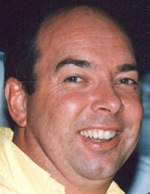Maunsell's datacentre move proves safer by design

It's one thing to know your datacentre is important to your company's day-to-day functioning, but something altogether different to risk disrupting critical services worldwide when circumstances force you to move the entire infrastructure.
For engineering consulting firm Maunsell, such circumstances arose when the lease on the company's Melbourne datacentre expired and was not offered for renewal. This put significant pressure on Maunsell, a subsidiary of global transportation, facilities and environmental consultancy AECOM that has 3,600 employees in offices across Australia, New Zealand, Asia and the Middle East.
Although a search soon identified a larger, more suitable site several blocks away, moving datacentres was a lot more complicated than simply unplugging the servers from the original site and reinstalling them at the new location. With 18 high-end Dell servers and a 4TB storage area network (SAN) spread across a dozen datacentre racks, Maunsell's entire global communications infrastructure -- the nervous system of its business -- runs through the Melbourne datacentre.
Needless to say, Maunsell's IT staff faced a need to make the move happen as smoothly as possible so that e-mail, Web, file-and-print and application services weren't compromised anywhere within the company's multinational operations. With the datacentre including essential applications for managing HR and financial data, unexpected downtime would have severe repercussions.

"The equipment we were moving is absolutely critical to the operation of the organisation," says Steve Dusting (pic), ANZ IT associate director with Maunsell. "Particularly in a professional services company, communications is absolutely essential -- and if key services are down for even a short time it's high visibility within the organisation."
Adding to the challenge was the issue of time. In the Middle East, a Saturday-to-Wednesday working week meant the team couldn't rely on the usual trick of running the moves over the whole weekend. Given time zone differences, Dusting's team realised the entire move would have to be pulled off within a six-hour window of opportunity, or Maunsell operations in other countries would start to feel the impact when they opened for business.
Testing, testing
For an organisation whose lifeblood revolves around turning complex engineering tasks into reality, Maunsell already knew what would help make its move a success: preparation. That's why, as early as nine months before the actual move, the company's IT engineers were already beginning to prep themselves and their ageing datacentre for the move.
This was no simple task. Even though servers may have been running in a particular state for some time, it's entirely possible that some systems may shut down and never wake up again, Dusting explains. Hard drive failures and interruptions in communications services are all possibilities -- so the team was extremely proactive in both planning and testing its evolving plan for the move.
Maunsell also brought in the help of Dell, which provided both the technical experts and skilled removalists necessary to pull the move off smoothly. Dell staff also worked with Maunsell to identify a number of servers that were overdue for replacement -- and therefore could be safely left behind during the move. E-mail servers were one such target, with new systems configured and switched on at the new site before the move, to ensure continuous service.
Servers weren't the only thing being revisited during the datacentre move, however. Maunsell's old site, which was expected to provide more than adequate headroom when it was set up more than a decade ago, had rapidly filled up and lacked many of the redundant air conditioning, security, UPS and other features necessary to minimise risk in modern datacentres.
Another major part of the company's preparations was to deal with its two telecommunications carriers to ensure continuity of voice and data services between the two sites. This proved particularly tricky as the company had to schedule around potential service moratoria imposed by the all-consuming 2006 Commonwealth Games. -There was a four to five week period where you couldn't get any resources because all of Telstra was involved in the Games," Dusting recalls.
Flipping the switch
After a tense period of physically moving the servers from one location, the systems were configured, connected and steadily turned on and tested by the Dell and Maunsell engineers. Thankfully, the process worked out smoothly, with no dropped servers or other unexpected dramas.
Dusting credits the quick and smooth move to the months of planning and testing that went into the preparations for the move. Even something as simple as cycling the power on old servers, to make sure they would come back to life after being moved, helped minimise the risk of unexpected problems thwarting the whole operation. Better still, the new datacentre offers a newer, more robust environment that Dusting believes will meet the company's continued growth for at least the next decade.
-The move wasn't by choice, but it went better than anybody was expecting," he says. -The best outcome you can get from a move like this is no comment at all; people turn up to work on Monday, get online, access e-mail, and don't notice anything different. And we have a much better, purpose built datacentre that's mitigating our risk by having a much improved environment that has also given us more floor space for future expansion."